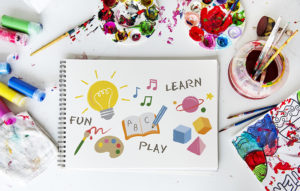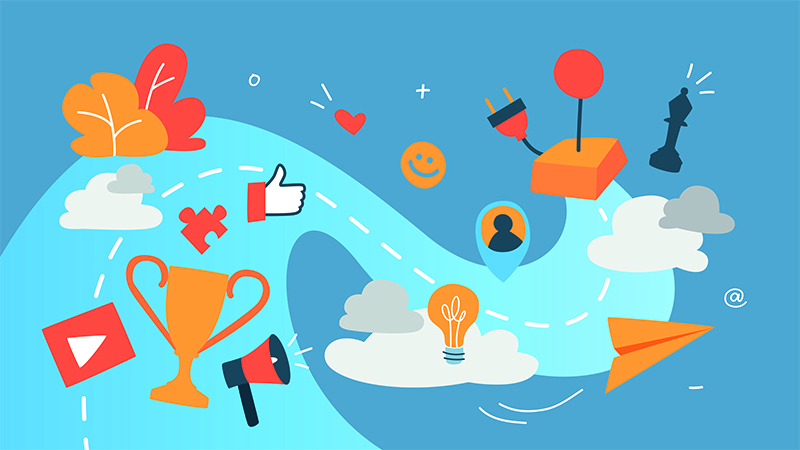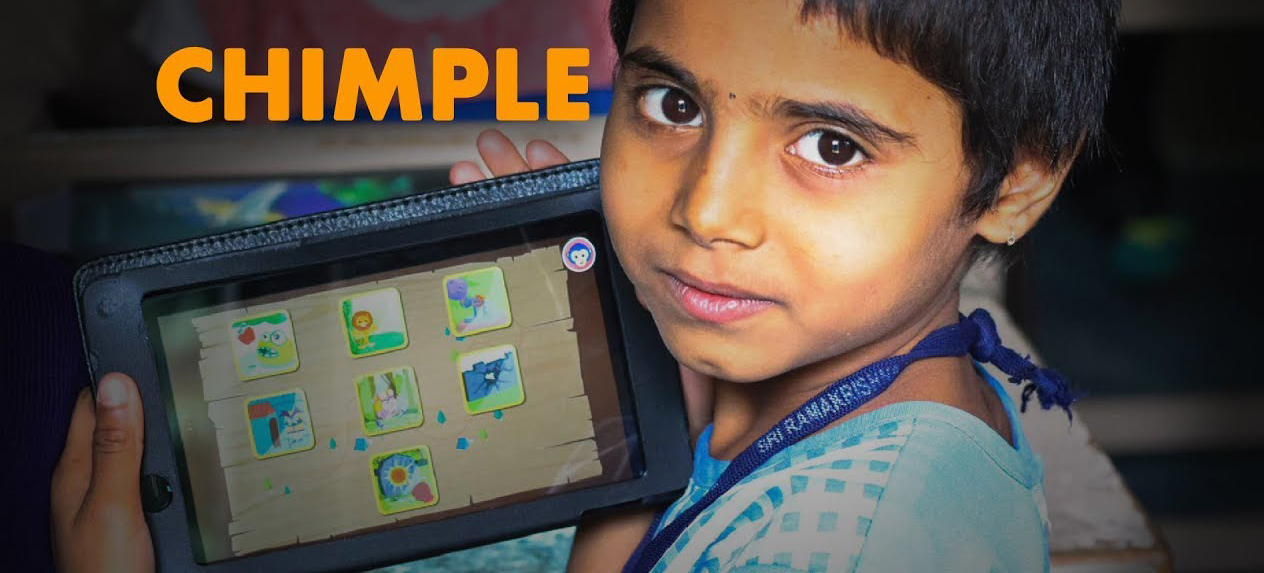Anyone who has watched a child enraptured in front of the television while Mickey, Minnie and their gang insistently repeat a sequence of numbers has witnessed the power of entertainment in learning. Who hasn’t learned the difference between “near” and “far” from the amusing “comings and goings” of a friendly blue cookie-eating monster on Sesame Street? Numbers, letters, distances, colours, World War II battles, chemical formulation or Neperian logarithms. It is clear that they all “come across” much better if mediated by some activity that makes them more appealing. This is edutainment.
Being a little more academic, the Cambridge Dictionary defines edutainment as “the process of entertaining people while teaching them something, and those products (such as television programmes or software) that do so. Many attribute the birth of the term to the Walt Disney Corporation, which, in 1948, used it to refer to the nature documentary series True Life Adventures. However, as with so many other concepts and approaches with analogue origins, the development of technology has taken edutainment to a new level.
In this post we will see, among other things, what it consists of, what are its benefits applied to education and the challenges of implementing it in vulnerable environments.
Play and entertainment as learning tools
As we have already seen, edutainment is the act of learning using a variety of entertainment media ranging from television to virtual reality, films, music, websites, video games or computer software. It was born with the development of mass media, especially television and cinema, and today, with the development of new technologies, edutainment has added various educational experiences based on the use of video games, virtual reality, mobile applications or digital content of various kinds.
Play and entertainment have been natural learning tools for girls, boys and adults since the beginning of time. Why should this capacity be curtailed when we come to school?
Play and entertainment have been natural learning tools for girls, boys and adults since the beginning of time. It is a recreational activity that allows them to explore, imitate, manipulate, create… It is their first way of learning. Why should this capacity be curtailed when we come to school? Entertainment and play are fun and exciting: they motivate us, challenge us, keep our attention. For all these reasons, especially in recent times, many trends, methodologies and practices have emerged that use play and entertainment to foster students’ learning. Some of these are listed below:
- Gamification. Gamification consists of applying elements characteristic of games to activities that, in principle, are not playful. Gamification in education consists of applying elements such as obtaining rewards or badges, narratives that place students in a context where they can practise their tasks, unexpected elements to surprise and motivate them… In this special report, the Educational Innovation Observatory of the Technological Institute of Monterrey studies educational gamification in detail.
- Game-Based Learning. Unlike gamification, which only uses game elements or techniques (and not the games themselves) to promote learning, game-based learning does use games to learn. For example, by organising a quiz to review the content of a lesson.
- Serious Games. Serious games are technological games specifically designed for some educational or awareness-raising purpose. They are not games designed to entertain or amuse, although they may do so.
- Virtual or immersive reality for educational purposes. Can you imagine being able to study Goya by getting inside one of his paintings? Or the Yalta Conference sharing the negotiating table with Roosevelt, Churchill and Stalin? I’m sure you’ll never forget it. Naturally, these experiences give students a better and deeper understanding of concepts and realities.
- Digital content. The expansion of platforms such as YouTube (and its specifically educational version EduTube) has turned videos into valuable pedagogical tools and the teachers who know how to use them into great online influencers. Videos can be used in very innovative and creative ways to motivate learners. For example, they can be used to reverse the classroom and use direct instruction for discussion and joint reflection on what has been seen at home; or they can be used to personalise learning by grouping students into different ‘learning stations’ according to skill or knowledge levels. Music and playlists can also be useful to promote learning about historical figures or literary works. In this article, we found an excellent example of how a Brazilian teacher used Spotify to teach literature to her students.
The thrill of learning and other benefits of edutainment

Imagen de vectorjuice para Freepik.
Unfortunately, and although this should not be the case because knowledge is one of the most exciting things there is, going to school is not regarded in the popular imagination as a fun and exciting activity. Playing, however, is. We sense it from the moment we are born. And it is so in analogue and digital. Identifying with a story, solving challenges, earning rewards, passing screens, overcoming challenges… This ability to excite and entertain is one of its main advantages. Let us look at others:
- Games develop metacognition, a key skill for learning. How does a child learn to play Minecraft? Identification, analysis and practice. Current research increasingly confirms that video game learning and classroom learning work in the same way. Like the players, outstanding pupils are more adept at identifying and analysing what they do not know. Both activities require participants to possess the metacognitive skills to recognise weaknesses in their own thinking. Through self-reflection, they identify errors and adjust their behaviour to address their shortcomings through practice.
- They facilitate the acquisition of skills across the spectrum. In addition to metacognition, edutainment facilitates the development of other basic life skills such as critical thinking, resilience, perseverance, empathy and problem-solving.
- They enable the personalisation of learning and inclusion. As mentioned above, immersive reality gives students a greater and easier understanding of complex intangible concepts, which gives it great potential for educating about equity and social justice. Moreover, its flexibility and adaptability facilitates personalised learning and makes it especially useful for people with disabilities or learning difficulties (IDB, 2022).
The challenges of edutainment in vulnerable environments
Despite the many benefits, edutainment also faces major implementation and development challenges, particularly affecting vulnerable environments. What are some of these challenges?
- The cost. In the case of edutainment more closely linked to technology, such as virtual or augmented reality, the cost of its development, acquisition and maintenance is one of the most limiting factors. Although, as the IDB mentions in its publication Digital trends and strategies, there are increasingly affordable options to facilitate access to these types of educational experiences for the most vulnerable schools.
- The digital gap and connectivity. Connectivity data for most of the vulnerable countries tell us that none of them meets basic connectivity conditions for education tell us that none of them meet the basic conditions of connectivity for education.
- Teacher training. Having teachers capable of structuring and implementing pedagogical practices supported by the digital technologies in an innovative and motivating way is one of the cornerstones of the digital transformation of education. But is that the norm? The data tell us it isn’t. In many countries there is a lack of teachers, and where there are teachers, there is a lack of training. Unfortunately, many teachers have not yet mastered the use of these tools sufficiently to integrate them into their teaching practices.
Neuroscientists say: emotion and enthusiasm promote learning. Few things can be taught and learned well if they are not mediated by emotion (Mora, 2017). Entertainment and play are conducive to excitement. Memorising and tiresomely reciting paragraphs from a textbook is not. However, their application should always be carefully planned and strategically implemented, with clear criteria and well embedded in the curricular aims of each subject. Otherwise, we run the risk of “clouding” these aims with the glitter of practices and activities that are very eye-catching, but with little continuity.
That said, let’s turn schools into places of excitement and make the most of edutainment, which, combined with new technologies and well planned and grounded, can become a powerful learning tool.
References
IDB. (2022). Edutainment. Tendencias y estrategias digitales.
Mora, F. (2017). Neuroeducación: solo se puede aprender aquello que se ama. Alianza publishing.
Educational Innovation Observatory, Monterrey Technlogical Institute. (2016). Gamification. EduTrends.






